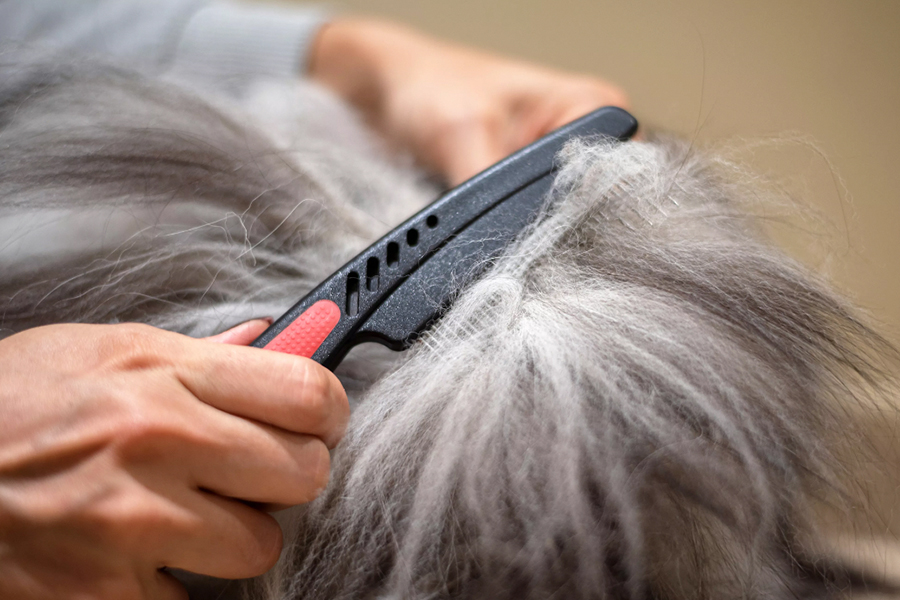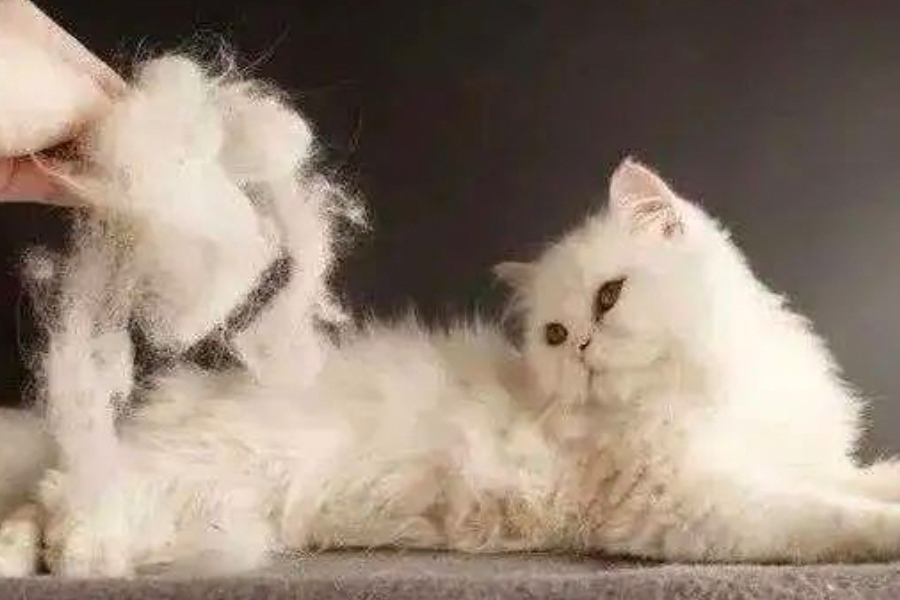As cats get older it is not uncommon for their fur to develop lumpy. If you have an older cat, you may notice that they become increasingly difficult to get rid of.
Arthritis
Arthritis often prevents them from moving body parts, such as the back and hips, properly. These tangled hairs can be very uncomfortable for cats and if left untreated can lead to discomfort, skin problems, and even more serious health issues.
In addition, changes in the fur itself and changes in the skin of the cat can also cause the cat to grow mats.
Fur Change
A cat’s coat is made up of two types of hair: the primary coat, the rough outer layer, and the secondary coat, the softer, fuzzy inner layer. As cats age, the primary hairs usually begin to thin out and the secondary hairs become more prominent. This change in the coat can make it more difficult to lay the hair flat, which can lead to tangles.
Skin Change
It is common for the coat texture of cats to change as they age. Nutritional deficiencies or disease can cause dietary changes in a number of ways. The fur can also become greasy or spiky, indicating an increase or lack of natural oils, and cats’ coats become greasy or spiky more frequently, making their fur drier and more prone to matting.
Health Problem
In some cases, the development of mats in a cat’s fur could be indicative of an underlying health problem. Certain medical conditions, such as obesity, diabetes, or skin allergies, can affect a cat’s grooming habits or the condition of their fur, making it more prone to matting.
How to Get Mats Out Of Cat Fur?

Getting mats out of cat fur can be a challenging task, but with patience and the right approach, you can successfully remove them.
Start by gently brushing your cat’s fur with a smoother brush to remove any loose hairs and then gently comb the mats away from the edges with your fingers.
If the mats are difficult to loosen, you can use a tangle spray or conditioner that is safe for cats. Once the mat is slightly loosened, carefully comb the mat gently with a narrow-toothed metal comb. If the mat remains taut even after trying to comb it, you can use a pair of blunt-edged scissors to carefully cut the mat into small pieces.
After successfully removing the mat or completing grooming, reward your cat with praise, treats, or playtime. This positive reinforcement will help to build a positive bond with the grooming experience.
Remember, if the mat is large, severe or causing your cat discomfort, it is best to consult a professional groomer or vet for help.
Preventing and Managing Mats in Older Cats
Regular Brushing
Despite potential challenges, it is crucial to continue grooming older cats regularly. Take extra care when brushing areas that are prone to matting, such as the belly, behind the ears, and under the armpits. If your cat has difficulty grooming themselves, consider seeking professional grooming services to ensure their coat stays healthy and mat-free.
Trimming
If the mats are too severe or close to the skin, it may be necessary to trim or shave the affected area. However, caution should be exercised to avoid accidental cuts or injury to the cat.
Promote a Healthy Lifestyle
Maintaining a healthy weight through a balanced diet and regular exercise can help prevent obesity-related issues that may contribute to matting.
In conclusion, cats can develop mats in their fur as they age due to reduced grooming abilities, changes in fur texture, lack of regular brushing, or underlying health issues. As responsible cat owners, it is essential to address this issue promptly to prevent discomfort and potential health problems for our aging feline companions. By maintaining regular grooming practices, promoting a healthy lifestyle, and seeking veterinary care when necessary, we can help keep our senior cats’ fur in excellent condition and ensure their overall well-being.

